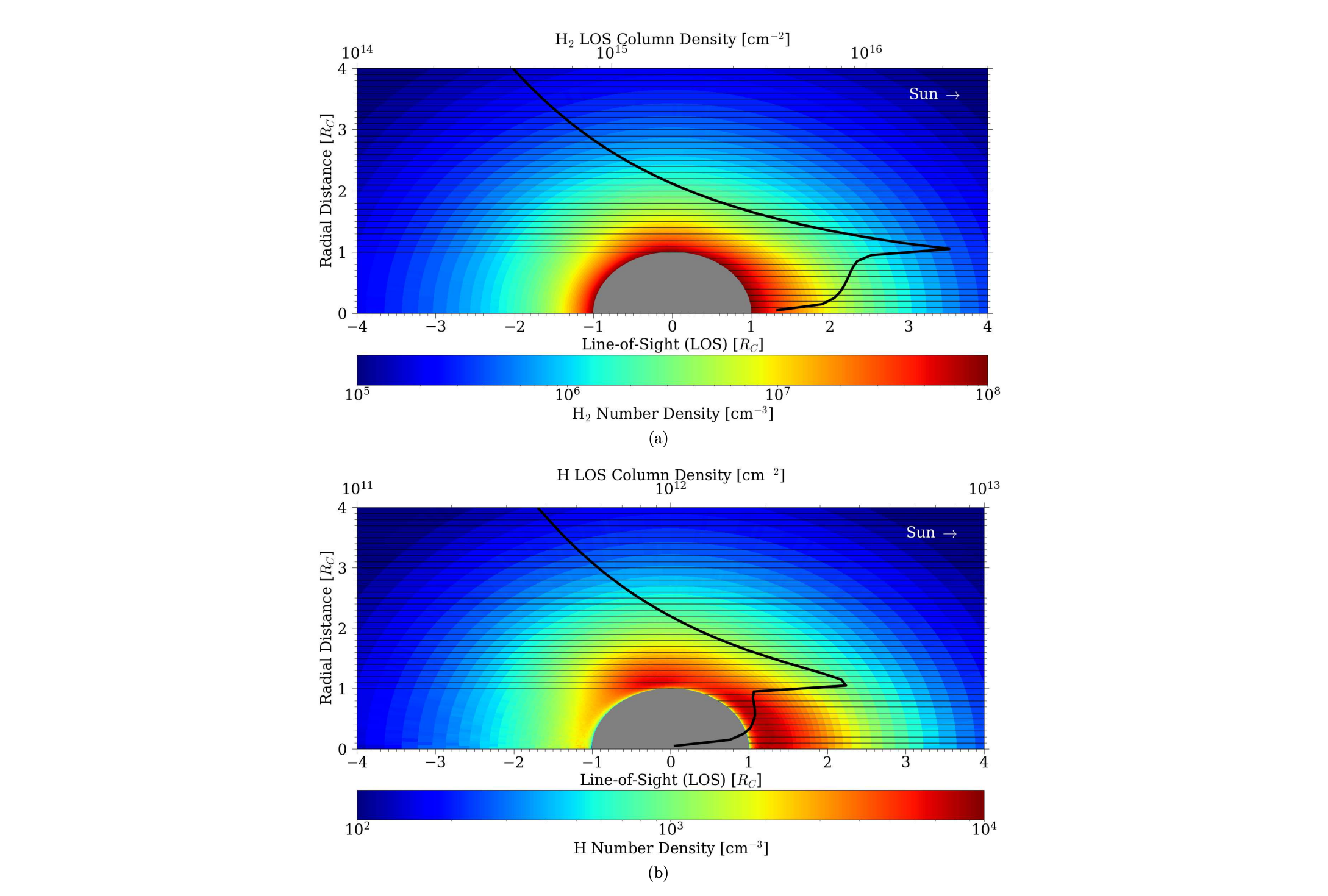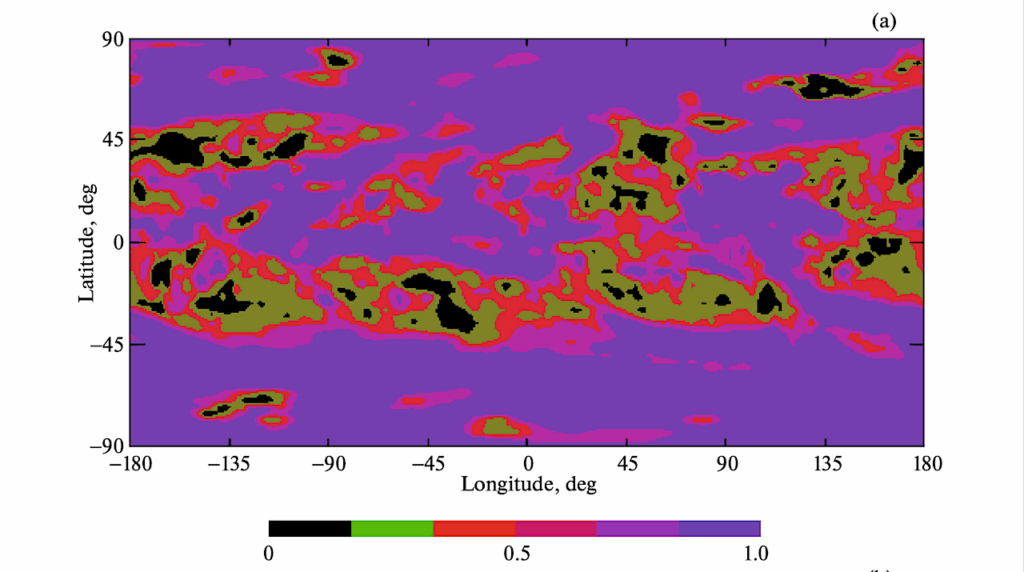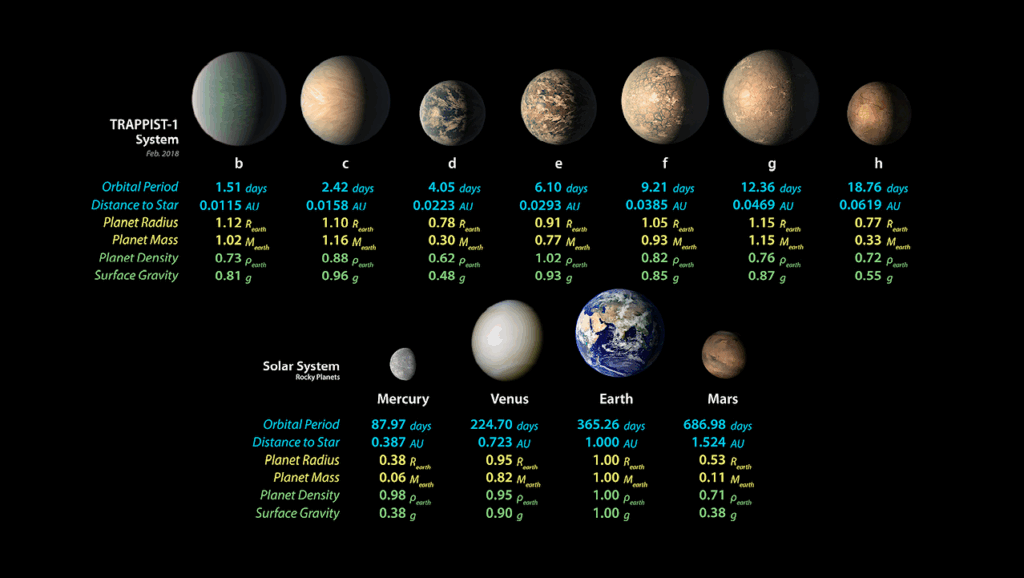Callisto’s Atmosphere: First Evidence For H2 And Constraints On H2O

We explore the parameter space for the contribution to Callisto’s H corona observed by the Hubble Space Telescope (Roth et al. 2017a) from sublimated H2O and radiolytically produced H2 using the Direct Simulation Monte Carlo (DSMC) method.
The spatial morphology of this corona produced via photo- and magnetospheric electron impact-induced dissociation is described by tracking the motion of and simulating collisions between the hot H atoms and thermal molecules including a near-surface O2 component.
Our results indicate that sublimated H2O produced from the surface ice, whether assumed to be intimately mixed with or distinctly segregated from the dark non-ice or ice-poor regolith, cannot explain the observed structure of the H corona. On the other hand, a global H2 component can reproduced the observation, and is also capable of producing the enhanced electron densities observed at high altitudes by Galileo’s plasma-wave instrument (Gurnett et al., 1997, 2000), providing the first evidence of H2 in Callisto’s atmosphere.
The range of H2 surface densities explored, under a variety of conditions, that are consistent with these observations is ~(0.4-1)x10^8 cm^-3. The simulated H2 escape rates and estimated lifetimes suggest that Callisto has a neutral H2 torus.
We also place a rough upper limit on the peak H2O number density (<~10^8 cm^-3), column density (<~10^15 cm^-2), and sublimation flux (<~10^12 cm^-2 s^-1), all of which are 1-2 orders of magnitude less than that assumed in previous models. Finally, we discuss the implications of these results, as well as how they compare to Europa and Ganymede.
Shane R. Carberry Mogan, Orenthal J. Tucker, Robert E. Johnson, Lorenz Roth, Juan Alday, Audrey Vorburger, Peter Wurz, Andre Galli, H. Todd Smith, Benoit Marchand, Apurva V. Oza
Subjects: Earth and Planetary Astrophysics (astro-ph.EP)
Cite as: arXiv:2210.14511 [astro-ph.EP] (or arXiv:2210.14511v1 [astro-ph.EP] for this version)
Submission history
From: Shane Carberry Mogan
[v1] Wed, 26 Oct 2022 06:49:52 UTC (4,302 KB)
https://arxiv.org/abs/2210.14511
Astrobiology








